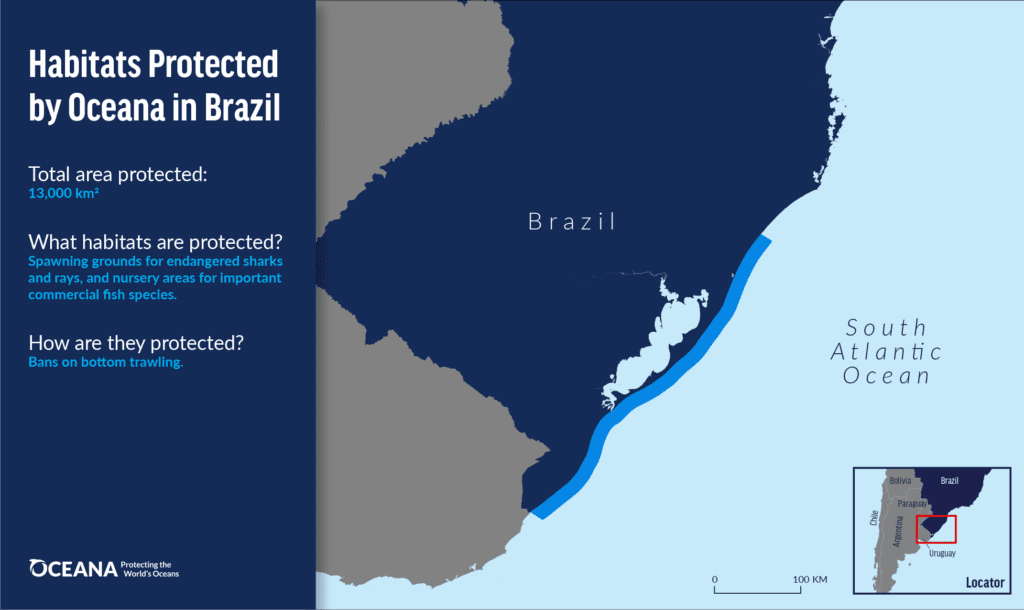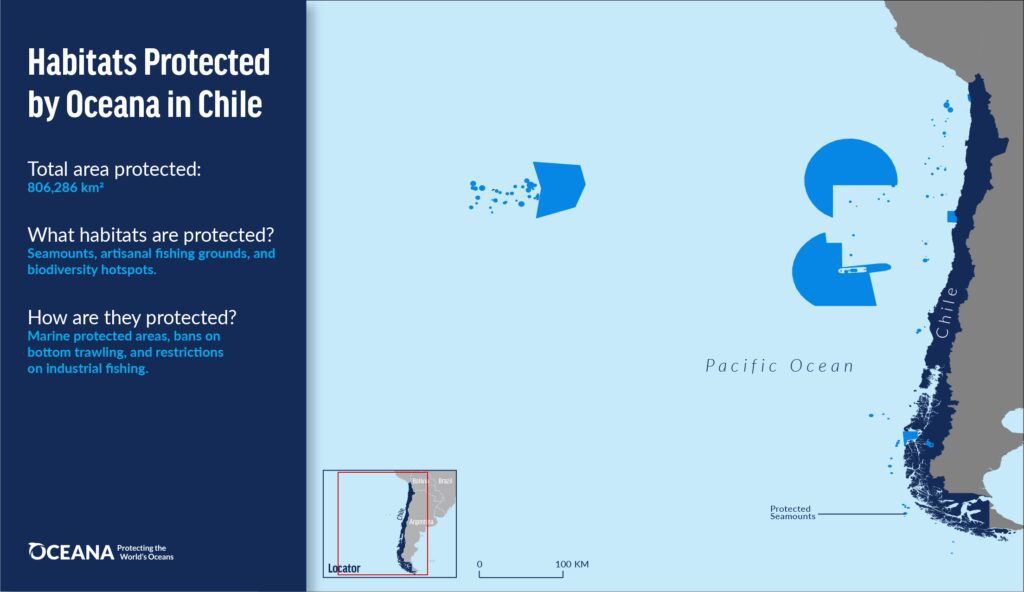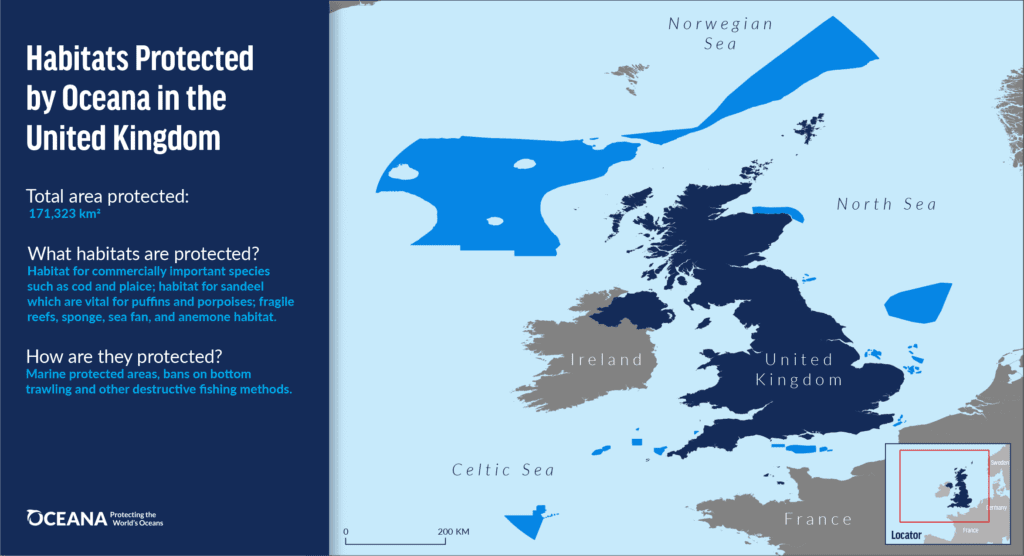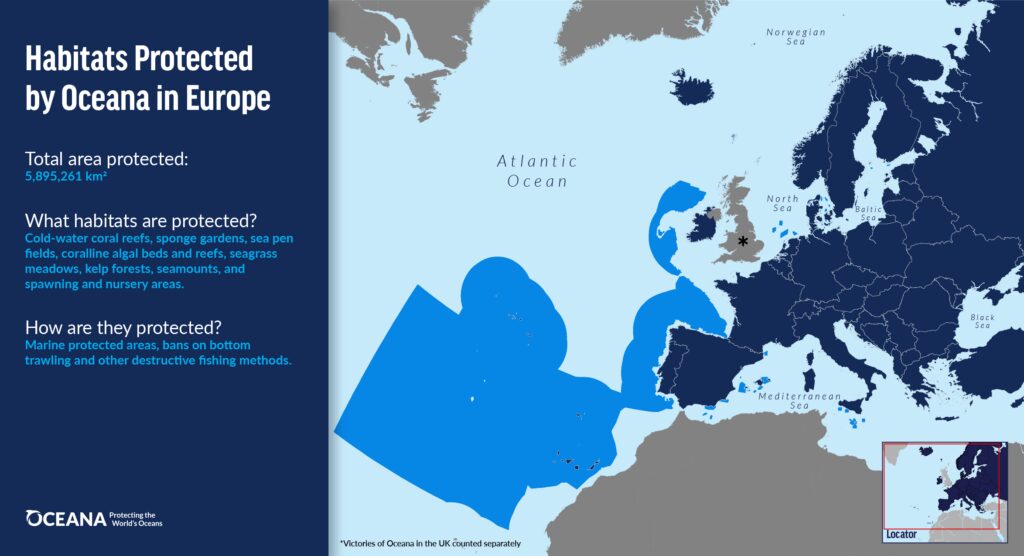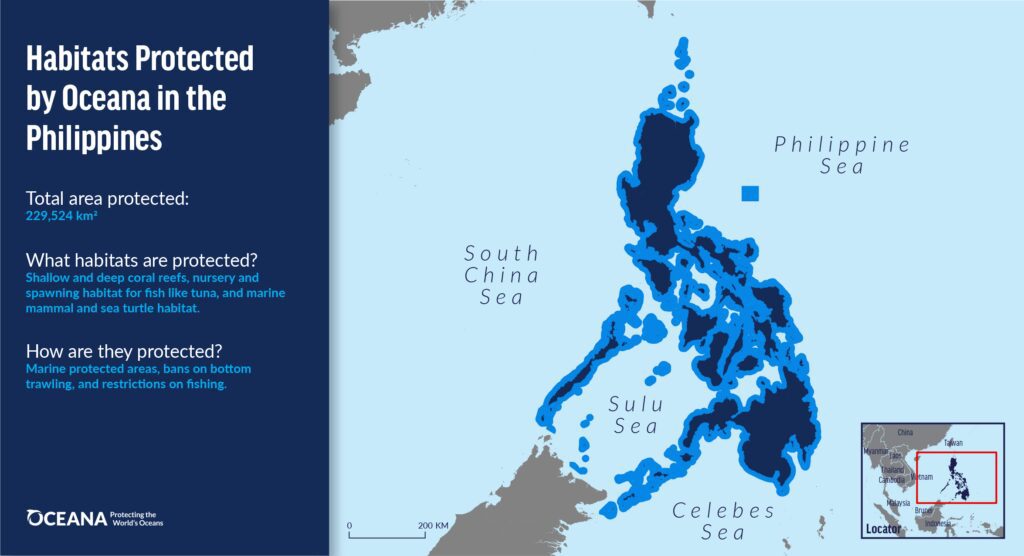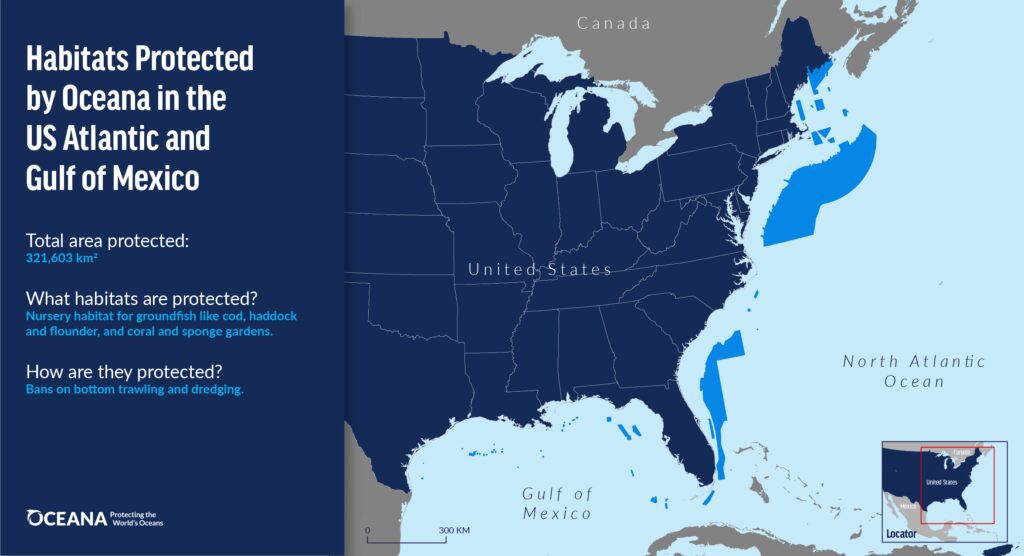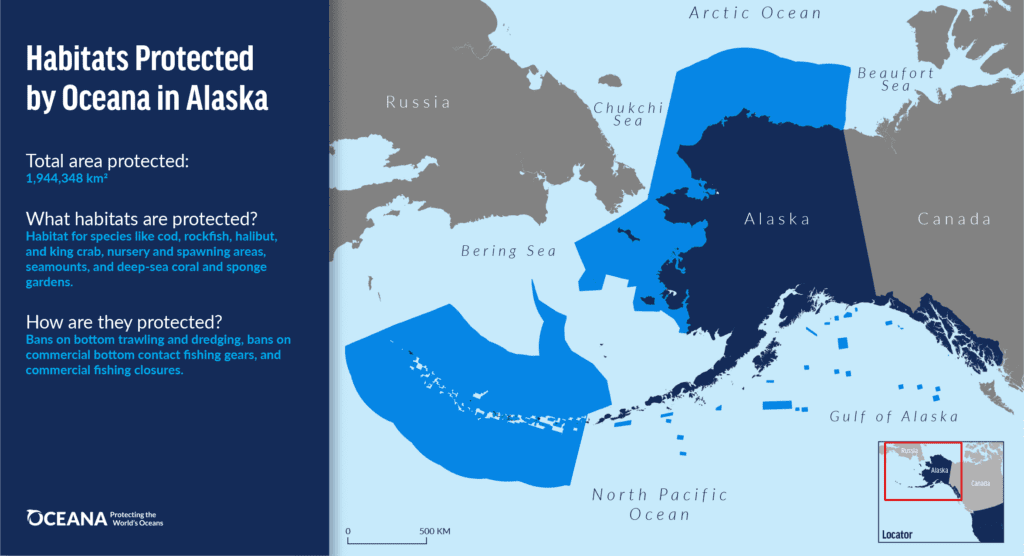PROTECTING IMPORTANT OCEAN HABITAT
The Campaign to Protect Ocean Habitats
The oceans cover more than 70% of the planet, yet only about 8% of them are currently protected.
We know that when our oceans are well protected, they thrive. Coastal ecosystems are particularly important for capturing and storing carbon dioxide, protecting communities from rising sea levels, and providing food and livelihoods to those who live in these areas.
In 2000, less than 1% of the waters off the countries where Oceana currently operates were protected. Today, thanks to campaigning by Oceana and our allies, about 19% of their waters are now protected. Oceana and our allies are continuing to work toward the global goal of protecting 30% of these ocean habitats by 2030.
Oceana also campaigns to protect habitat from highly destructive fishing practices, including bottom trawling – where huge nets are dragged for miles along the seafloor, bulldozing everything in their path. In total, Oceana has protected more than 4 million square miles (10 million square kilometers) of ocean habitats.

Victories
TAKE ACTION
TAKE ACTION
Urge World Leaders to Protect 30% of Ocean Habitat by 2030


